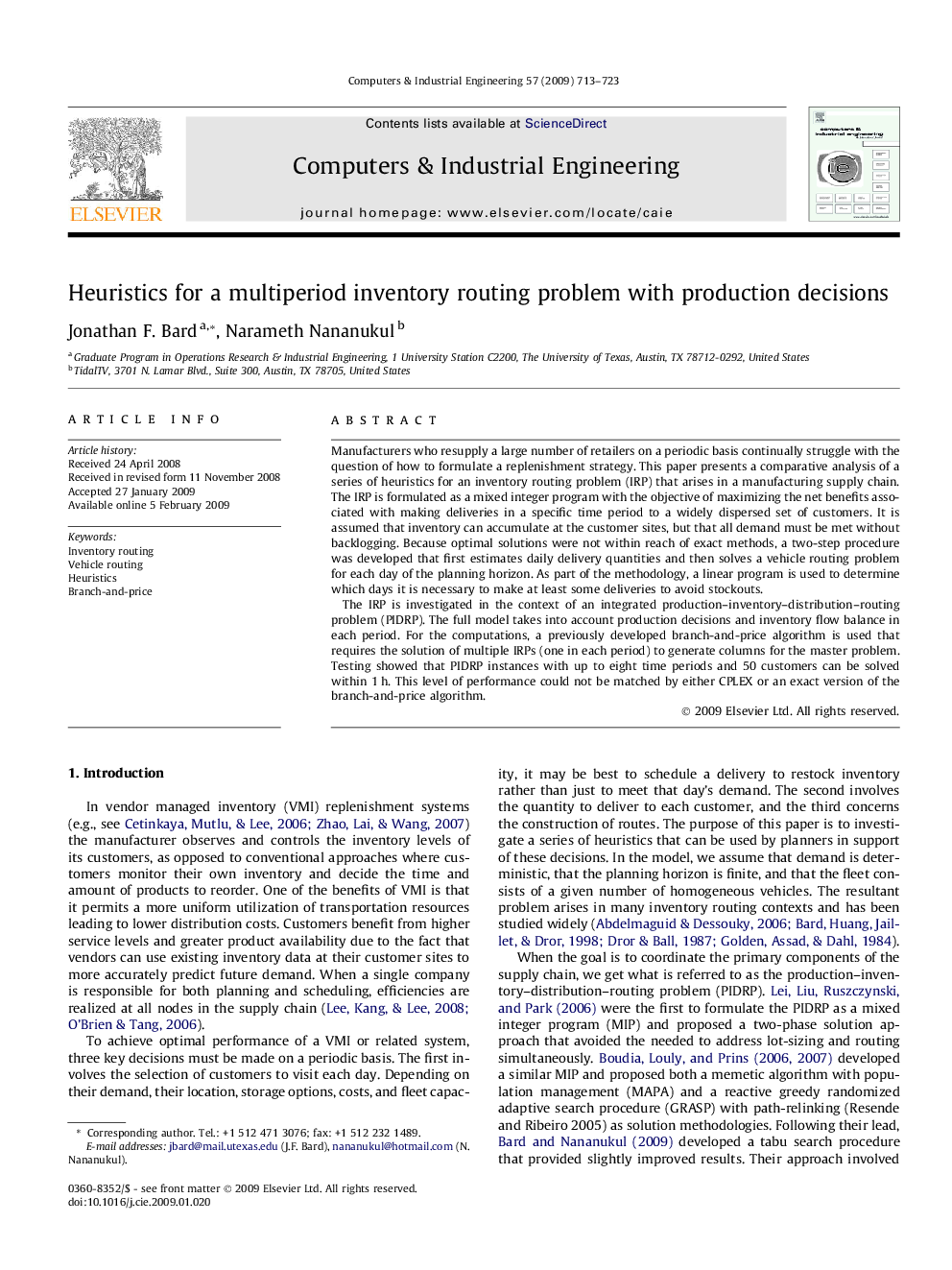| Article ID | Journal | Published Year | Pages | File Type |
|---|---|---|---|---|
| 1135168 | Computers & Industrial Engineering | 2009 | 11 Pages |
Manufacturers who resupply a large number of retailers on a periodic basis continually struggle with the question of how to formulate a replenishment strategy. This paper presents a comparative analysis of a series of heuristics for an inventory routing problem (IRP) that arises in a manufacturing supply chain. The IRP is formulated as a mixed integer program with the objective of maximizing the net benefits associated with making deliveries in a specific time period to a widely dispersed set of customers. It is assumed that inventory can accumulate at the customer sites, but that all demand must be met without backlogging. Because optimal solutions were not within reach of exact methods, a two-step procedure was developed that first estimates daily delivery quantities and then solves a vehicle routing problem for each day of the planning horizon. As part of the methodology, a linear program is used to determine which days it is necessary to make at least some deliveries to avoid stockouts.The IRP is investigated in the context of an integrated production–inventory–distribution–routing problem (PIDRP). The full model takes into account production decisions and inventory flow balance in each period. For the computations, a previously developed branch-and-price algorithm is used that requires the solution of multiple IRPs (one in each period) to generate columns for the master problem. Testing showed that PIDRP instances with up to eight time periods and 50 customers can be solved within 1 h. This level of performance could not be matched by either CPLEX or an exact version of the branch-and-price algorithm.
